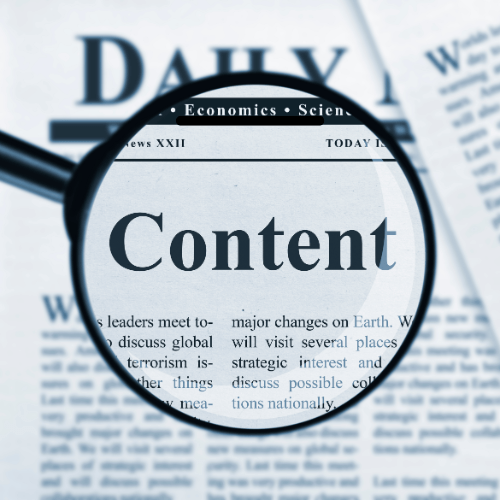Content is everywhere. You see it online, published, and even in discussions. But what is content accurately? Let’s dive deep and explore.
Defining Content
What is Content, It is any data or understanding shared through modes like text, audio, video, or images. It’s how we link thoughts, express stories, and share information.
Types of Content
Content comes in many forms. Here are some common types:
- Text: Articles, blog posts, social media updates
- Audio: Podcasts, music, voice notes
- Video: YouTube videos, webinars, live streams
- Images: Photos, infographics, memes
Text Content
Text content includes written words. This can be articles, books, or social media posts.
Audio Content
Audio content is sound-based. Think of podcasts, radio shows, or audiobooks.
Video Content
Video content combines visuals and sound. Examples include YouTube videos and online tutorials.
Image Content
Image content practices pictures. Photos, infographics and illustrations include in this group.
The Importance of Content
Content is crucial for several reasons:
- Communication: It helps share ideas and information.
- Engagement: Good content keeps audiences interested.
- SEO: Search engines rank content to help users find information.
- Branding: Content reflects a brand’s voice and values.
What Makes Good Content?
Good content has certain qualities:
- Relevant: It meets the audience’s needs.
- Engaging: It grabs and holds attention.
- Valuable: It provides useful information or entertainment.
- Original: It offers unique perspectives or insights.
Relevant
Content should address the audience’s questions or problems.
Engaging
It should be interesting and compelling.
Valuable
Content should offer something useful or entertaining.
Original
It should provide a fresh take or new information.
Creating Effective Content
Creating effective content involves several steps:
- Research: Understand your audience and their needs.
- Planning: Outline your content strategy.
- Creation: Write, record, or design the content.
- Editing: Review and refine the content.
- Publishing: Share the content on appropriate platforms.
Research
Know your audience and what they want.
Planning
Develop a content strategy and plan.
Creation
Produce the content, whether text, audio, video, or images.
Editing
Refine and improve the content before publishing.
Publishing
Share the content on platforms where people interact with content.

Content Distribution Channels
Content can be distributed through various channels:
- Websites: Blogs, company sites
- Social Media: Facebook, Twitter, Instagram
- Email: Newsletters, promotional emails
- Traditional Media: Print newspapers, magazines
Websites
Your website is a primary platform for what is content.
Social Media
Reach a broad audience through social platforms.
Send targeted content directly to your audience.
Traditional Media
Use print media to reach traditional audiences.
Measuring Content Success
To measure content success, use these metrics:
- Traffic: Number of visitors
- Engagement: Likes, shares, comments
- Conversions: Sales, sign-ups
- SEO: Search engine rankings
Traffic
Measure how many people visit your content.
Engagement
Look at likes, shares, and comments.
Conversions
Track actions like sales or sign-ups.
SEO
Check your content’s search engine rankings.
Detailed Table: What Is Content? Content Explained & Defined
| Content Type | Description | Examples | Benefits |
| Text | Written words | Articles, blog posts, social media updates | Easy to produce, highly searchable |
| Audio | Sound-based | Podcasts, music, voice notes | Hands-free, accessible for multitasking |
| Video | Visual and sound | YouTube videos, webinars, live streams | Highly engaging, visual learning |
| Images | Visuals | Photos, infographics, memes | Quick to consume, shareable |
Conclusion
Content is the cornerstone of communication. It takes numerous methods like text, audio, video and images. Upright content is relevant, appealing, treasuring and original. Creating real content contains research, preparation, creation, editing and publishing. Use different circulation channels and measure success through traffic, engagement, renovations, and SEO. Grasping content can increase communication, engagement, branding, and SEO.
FAQs and Their Answers
What purpose does content perform in SEO?
Content plays a key role in SEO. Search engines rank content to help users find information. High-quality content improves search engine rankings. It also attracts backlinks and increases site traffic.
How can I increase the interaction of my content?
To make content more engaging, use these tips:
- Use visuals: Include images, videos, and infographics.
- Tell stories: Share relatable and interesting stories.
- Ask questions: Encourage audience interaction.
Why is original content important?
Original content is crucial for several reasons:
- Unique value: It offers fresh perspectives and insights.
- SEO benefits: Search engines favor unique content.
- Brand differentiation: It sets you apart from competitors.
- Audience trust: Original content builds credibility and trust.
How do I measure the success of my content?
Measure content success using these metrics:
- Traffic: Number of visitors reach to content are the main traffic.
- Engagement: Likes, comments and time spent on content.
- Conversions: Actions like sales, sign-ups, or downloads.
- SEO: Search engine positions and keyword presentation.

Very informative
Nice article really informative🫠😋
[…] quality work tips to repeat business and transfers. Meet goals, join successfully, and top client chances. Happy clients can top to […]
Very informative. Keep it up
[…] are the first step. Who are they? What do they need? Replying these questions helps in making related content. Here’s a table brief how to understand your onlookers […]
[…] What Makes Good Content? […]
[…] it involves writing content, you can do it from anywhere such comfort of your home, a café or even during a tour. A lot of […]